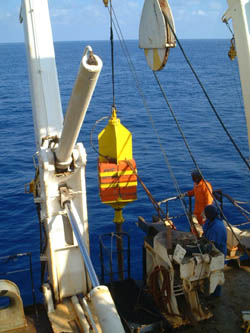Recreating sea surface temperatures in the Caribbean
The Atlantic Ocean is known to strongly influence the climate in Europe. Understanding and being able to predict the future state of the climate requires intimate knowledge of past conditions on Earth including its atmosphere and its oceans. The PACLIVA project aimed to supplement records of sea surface temperature (SST) in the Caribbean dating back over 8,000 years before present (BP). Climate scientists with the Department of Earth Sciences at the University of Gothenburg in Sweden studied a number of sediment cores gathered from the region. Globigerinoides sacculifer, a species of planktonic foraminifer, was used to carbon date samples from Puerto Rico, the Virgin Islands and other sites. The next step involved deciphering SST from relative concentrations of planktonic foraminfera found at various positions in the cores corresponding to different periods in the past. Artificial neural networks (ANNs), trained on GLAMAP (glacial Atlantic ocean mapping) data and validated with COADS (Comprehensive ocean atmosphere data set) , were instrumental in this process. Statistical indicators, such as the root-mean-square-error of prediction (RMSEP), indicated much greater accuracy, in the order of half a degree Celsius, than other methods. The Swedish researchers subsequently recreated SST time series for periods from 0-2000 and 6000-8000 BP. They discovered that past warm-season and especially cold-season SSTs were generally cooler than those observed in present times. However, the impact of the Little Ice Age was less evident than expected. Sharper drops in SST corresponding to well-documented sunspot activity were successfully reproduced by the ANNs. On the other hand, solar maxima in the 6000-8000 BP period did not appear to warm the Caribbean as much as other regions. These findings will help feed climate research focusing on the role of the Atlantic Ocean.





